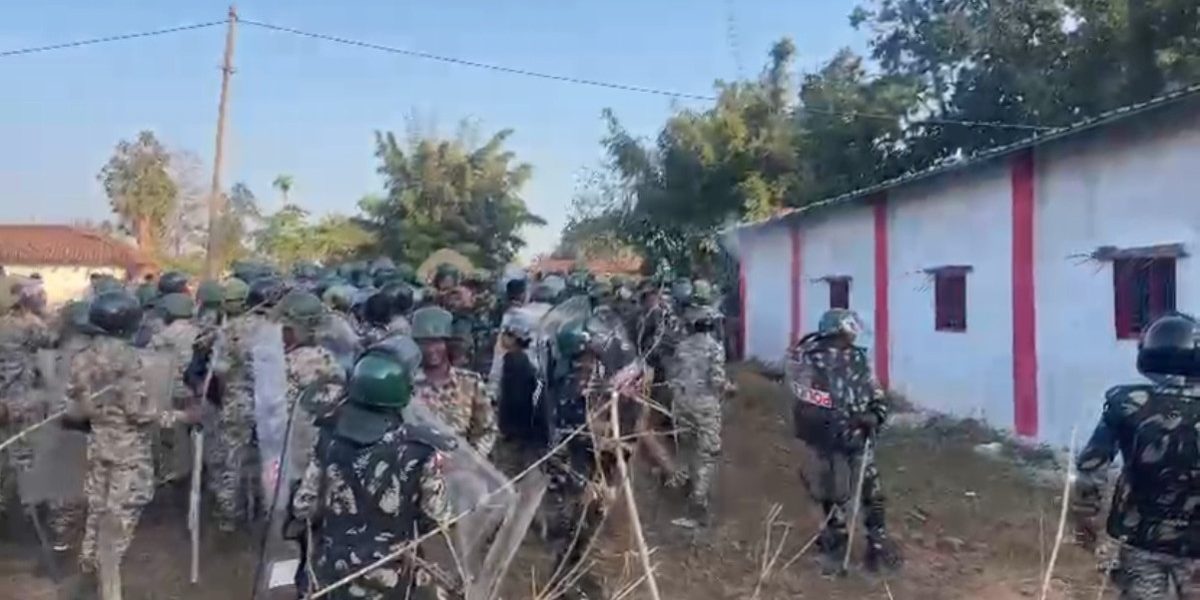A little over a decade after Nepal declared itself a secular republic, religious identity threatens to emerge as a new axis of polarization in the politics of the former Hindu kingdom. A string of incidents that transpired over the past year have rudely awakened many in Nepal — including its complacent public sphere — of the inroads made by activist networks of militant Hindu nationalists, particularly in towns close to Nepal’s long border with India.
In August of last year, clips of a group publicly feasting on beef in Dharan, a city in eastern Nepal, gathered much national outrage, as eating bovine meat is largely taboo in the country and oxen slaughter remains illegal. This rabble-rousing tactic of activists, who were opposed to this law, triggered swift street mobilization by several Hindu groups in protest, who linked this incident to an already existing controversy in the city involving the setting up of a church opposite a Hindu temple. However, the potentially violent confrontation was foiled after the local administration temporarily restrained the protesters’ movement. Dharan remained on edge for weeks, with its diverse political and social landscape suddenly recast as a religious battlefield.
Malangawa, a town close to the Indian border and about 150 miles west of Dharan, was also forced to shut down several times in September last year to avoid violent standoff between its majority Hindus and minority Muslims. Preexisting differences between the two over the passage of Hindu ritual processions through the town’s Muslim neighborhoods allowed the Hindu Samrat Sena, a small Hindu nationalist outfit, to violently protest and ramp up “communal” tensions — a South Asianism for interreligious or interethnic strife — in the town.
A month later, local administration in Nepalgunj, another city near the border, imposed a curfew to dissipate escalating tensions between Hindus and Muslims after violent protests, triggered by a social media post, took over the streets. Taking notice of these developments, security agencies briefed the government on orchestrated campaigns to stoke further interreligious violence. In November of last year, the government indeed instrumentalized these developments to impose a ban on TikTok; among the reasons provided was its use for “the disruption of social harmony.”
Such efforts to escalate local tensions into sectarian battles — pitting the supposedly beleaguered Hindu majority against its many enemies — have become frequent in Nepal, particularly in towns dotting the Madhesh region, the country’s southern strip above India. For a growing number of politically ambitious groups and individuals, the explosion of Hindu supremacist politics in the southern neighborhood has offered a working model for popular mobilization. Some of this is seen in efforts to capture conservative resentment against the secular and republican turns Nepal took in the late 2000s, following the end of the decade-long Maoist insurgency. The country’s small but vocal networks of Hindu nationalists, however, have been eyeing a much larger pool of potential support.
Over the past decade, a series of constitutional crises, internecine coalitions, and corruption scandals have left a severe dent in the popularity of the country’s major political parties. Among the several forces jostling to fill this vacuum are Hindu nationalists, who hope to capitalize on growing resentment against the political mainstream. With some welcome support from like-minded institutions across the border in India, they seek to give a distinctly sectarian shape to the collective discontents of a Hindu-majority electorate. Recent disturbances may, therefore, mark the early success of the project.
This story was originally published in jacobin.com. Read the full story here.





